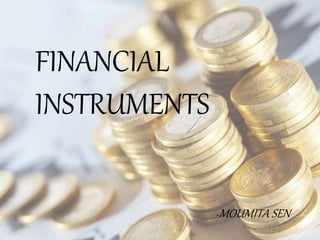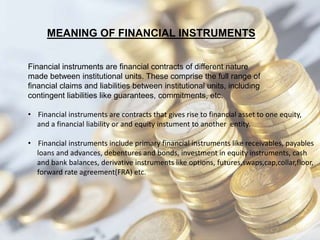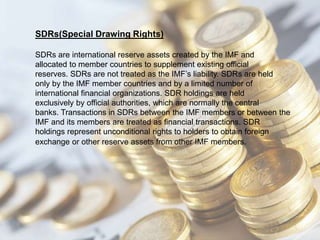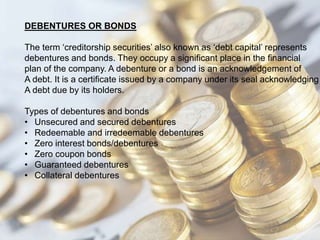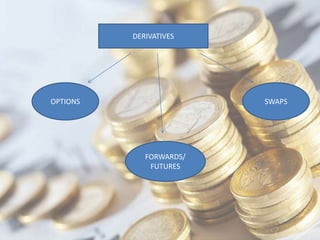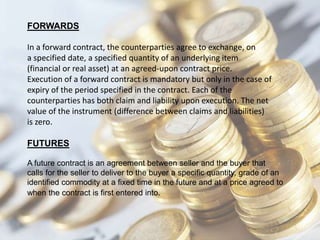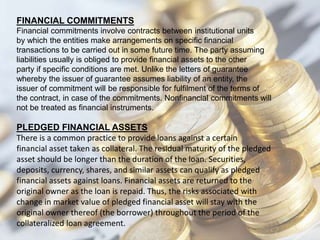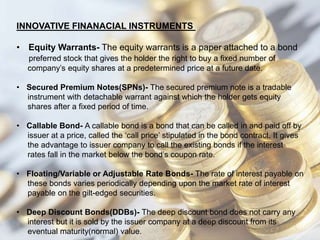Financial instruments are financial contracts between institutional units that include a range of financial assets and liabilities. Some key types of financial instruments are deposits, special drawing rights (SDRs) issued by the IMF, borrowings, loans, shares and other equity, debentures or bonds, other accounts receivable and payable, financial derivatives like options and swaps, letters of guarantee, letters of credit, and financial commitments. Derivatives allow parties to exchange risks and can include options, forwards/futures, and swaps. Loans are evidenced by non-negotiable documents and can be short, medium, or long term. Shares represent ownership rights in enterprises and equity, while debentures or bonds are a form of
